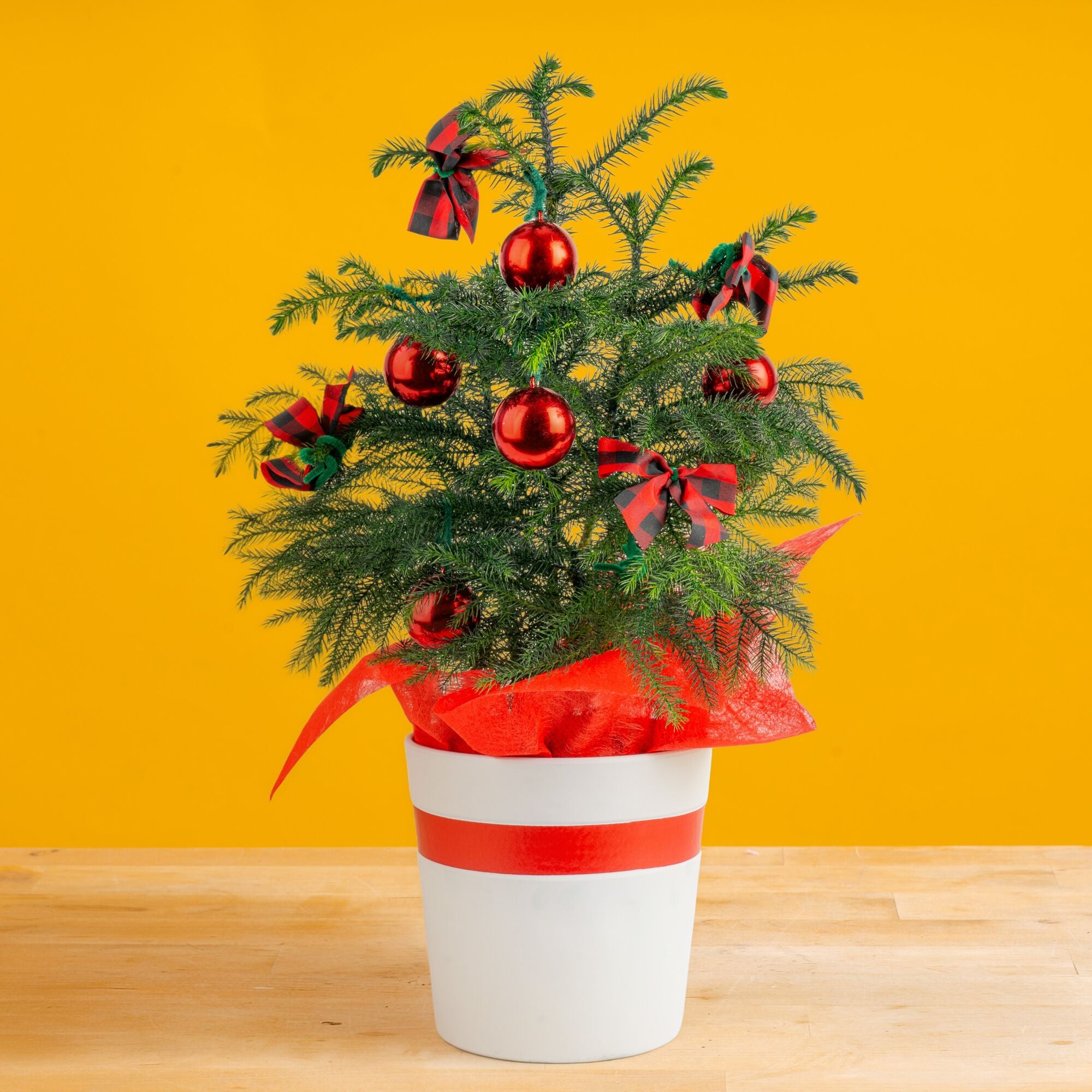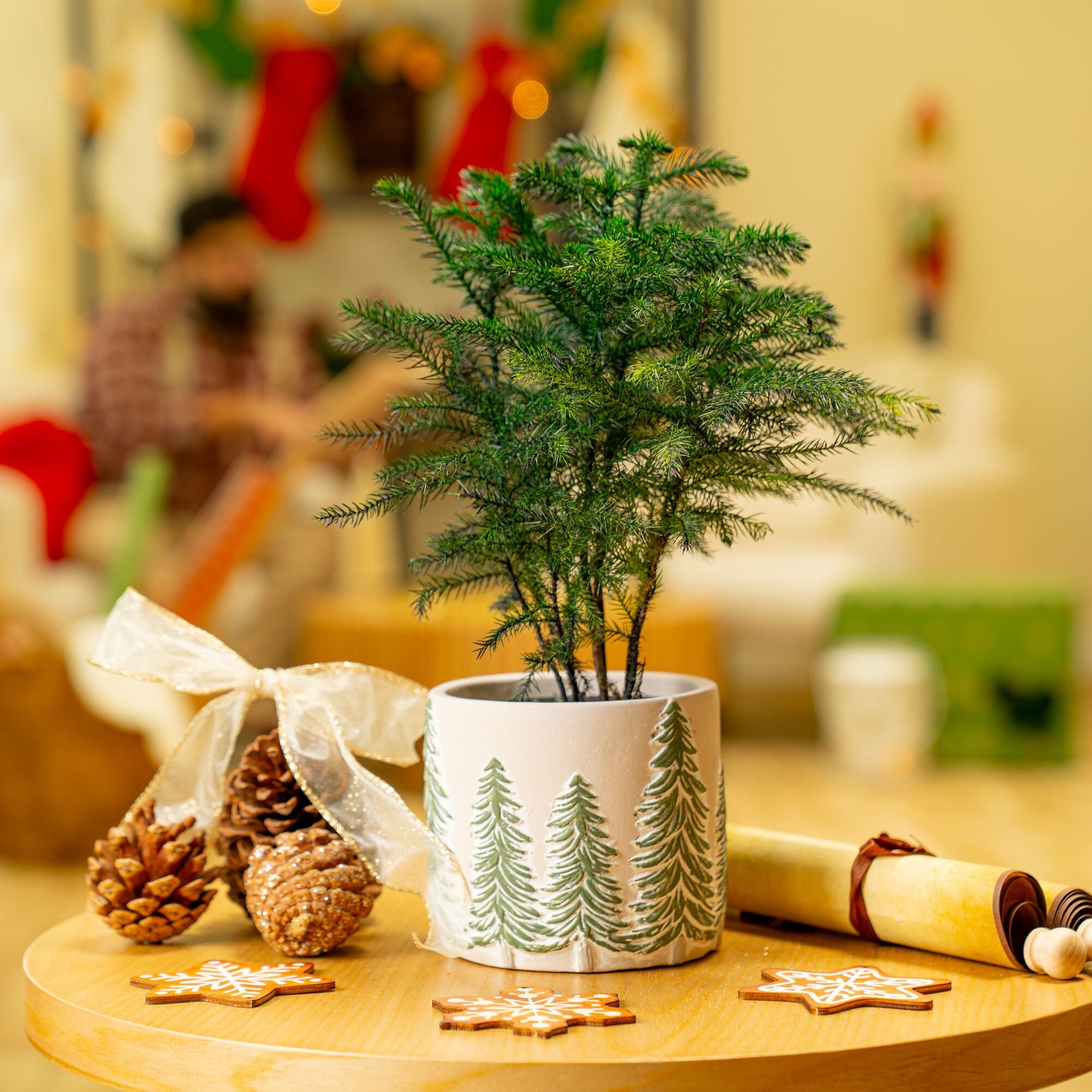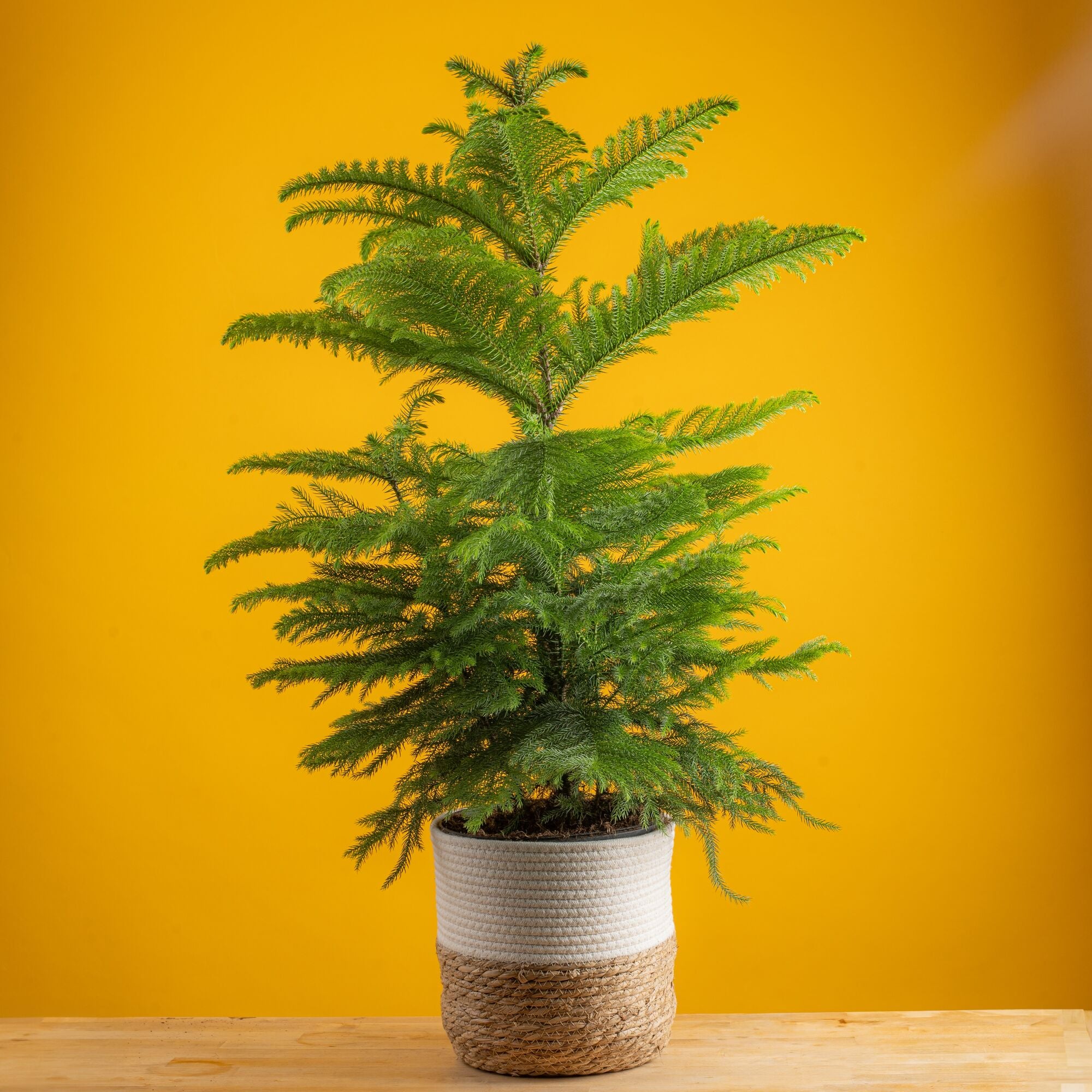Caring for a Norfolk Island Pine (Araucaria heterophylla)
Watering, lighting, and placement essentials for keeping your Norfolk Island Pine (Araucaria heterophylla) healthy, green, and thriving indoors year-round.
Watering Guidelines
To determine when to water, touch the top inch of the soil. If it feels dry, it’s time to water. Norfolk Pines prefer evenly moist soil but do not like sitting in excess water, which can lead to root rot.
Here’s a guide based on pot size:
-
10-inch pot: Use approximately 3 cups of water
-
6-inch pot: Use around 1 cup of water
-
4-inch pot: Use around 1/2 cup of water
After watering, check the drip tray or decorative pot about 20 minutes later to make sure there’s no standing water. Always empty the tray if needed — excess water can cause root rot.
How Often to Water
In most homes, Norfolk Pines should be watered:
-
Every 5 to 7 days during spring and summer
-
Every 7 to 10 days during fall and winter
Smaller pots (2.5 to 5 inches) may need more frequent watering — every 3 to 5 days — especially in warmer, drier rooms. As always, check the soil first before watering, since humidity and temperature can affect how quickly the soil dries out.
Signs Your Plant Needs More Water
Look for the following signs that your Norfolk Pine may need more frequent watering:
-
Dry or brown leaf tips
-
Lower branches turning brown or falling off
-
Drooping or stiff upper branches
These are signs that the plant isn’t getting enough moisture or the air is too dry.
Light Requirements
Norfolk Pines thrive in bright, indirect light. They do best near a window that gets plenty of natural light throughout the day but is protected from strong afternoon sun, which can cause the needles to yellow or brown.
Avoid placing the plant in deep shade or low light — this can lead to leggy growth and bare lower branches.
If possible, rotate the plant occasionally to keep its shape even and prevent it from leaning toward the light.
Location and Temperature
Norfolk Island Pine is actually a tropical plant, despite its classic pine-tree appearance. It cannot tolerate cold temperatures and should only be kept outdoors in areas where it stays above 55°F (13°C) year-round.
Indoors, choose a location that is:
-
Away from fireplaces, space heaters, and heating vents, which can dry out the air and scorch the foliage
-
Away from drafty doors or windows where cold air may cause needle drop
-
In a room with stable, moderate temperatures (ideally between 60–75°F)
Avoid sudden temperature swings or exposure to cold air — Norfolk Pines are not frost-hardy.
Fertilization
Fertilize your Norfolk Pine in spring and summer using a time-release fertilizer made for houseplants. Always follow the directions on the product label to avoid over-fertilizing, which can damage roots and cause needle drop.
Do not fertilize during fall and winter when the plant naturally slows down.
Bonus Tips
-
Norfolk Pines prefer moderate to high humidity. If your home is dry, especially in winter, consider using a humidifier, humidity tray, or regular misting to prevent brown tips.
-
If used as a holiday tree, avoid heavy decorations and do not spray with fake snow or flocking, as this can damage the needles.


